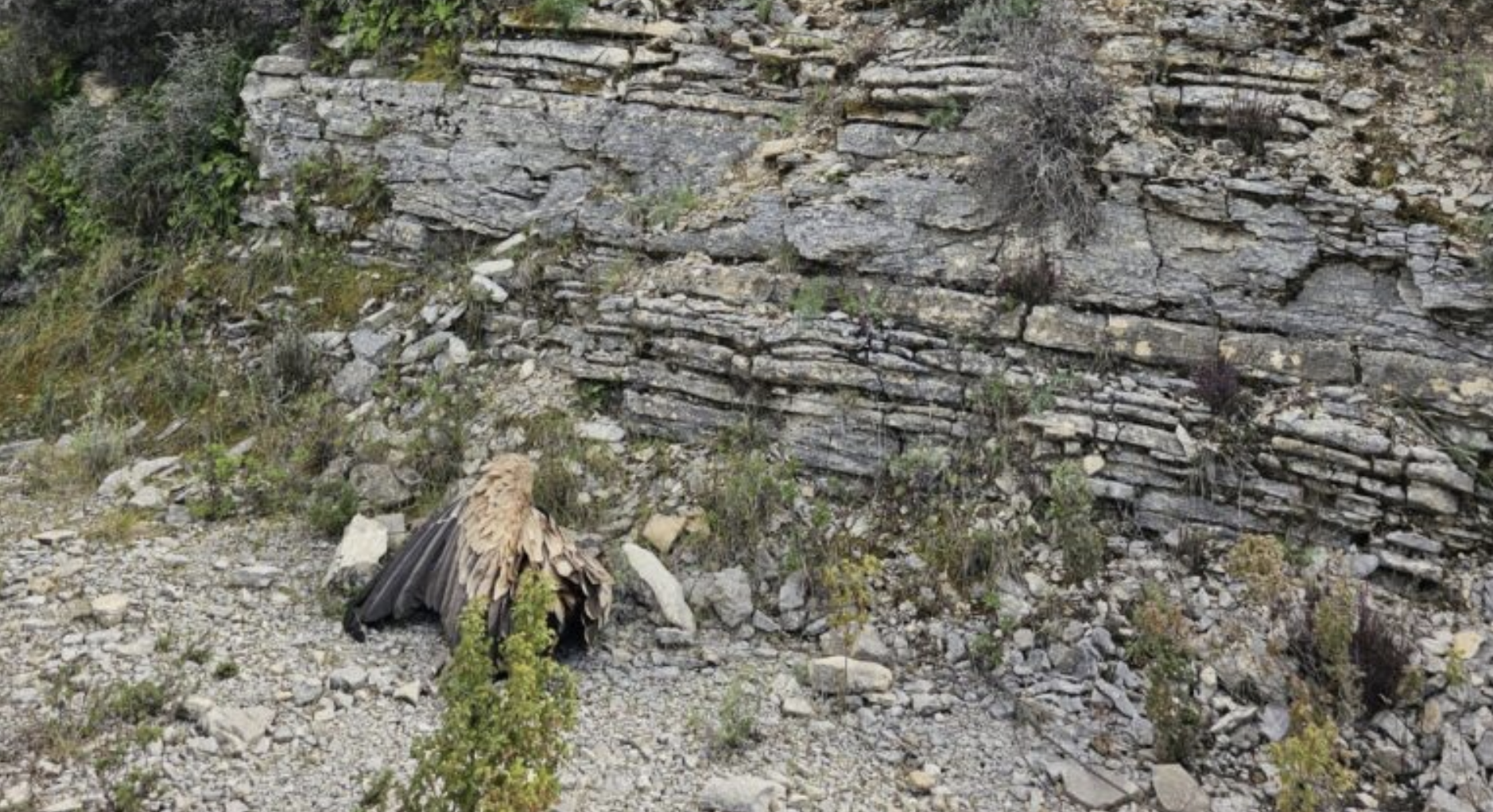
One of our Portuguese partners, Palombar – Association of Nature Conservation and Rural Heritage, has reported that a 22 year old griffon vulture, identifiable by coded leg rings, has been observed feeding at one of the supplementary feeding sites that they manage as part of the project “LIFE Rupis – Conservation of the Egyptian vulture and the Bonelli’s eagle in the Douro river valley”
Unexpected visitor
Although griffon vultures are not the target species of the LIFE Rupis project actions they regularly use some of the feeding sites as they breed in increasing numbers in the Douro Valley. In fact, one aim of the feeding strategy is to provide food in a way that is more accessible and beneficial to Egyptian vultures than the much larger and more numerous griffon vultures that can often out-compete the smaller species. Nevertheless, this is an interesting record because although griffon vultures can live for at least 41 years in captivity their average life expectancy in the natural environment is much lower at ~25 years.
In September this year the same griffon vulture was photographed twice (on the 10th and 19th) by remote camera traps that are used to monitor the sites by Palombar wildlife monitoring technicians at a feeding site in the Bragança area. The same bird also visited feeding sites managed by Palombar in the counties of Mogadouro and Alfândega da Fé in August, October and November in 2016.
An old bird
Following this vulture’s movements has only been possible because it was marked with a coded leg ring as a juvenile bird in 1996 in Montes de Jerez de la Frontera, in Cadiz, Spain. The entity responsible for the ringing and for centralizing the information regarding the monitoring of this animal is the Doñana Biological Station, in Seville, Spain. Palombar and other local partners across the LIFE projects monitor marked birds including vultures, sharing information about them with various national and international entities that can then estimate parameters about movements and survival which are used to inform conservation strategies.
In Portugal a few hundred pairs of griffon vulture are nesting, but their distribution is skewed towards the border with Spain. The main breeding areas are located in the Northeast Transmontano which is home to more than half of the Portuguese population of this species.




